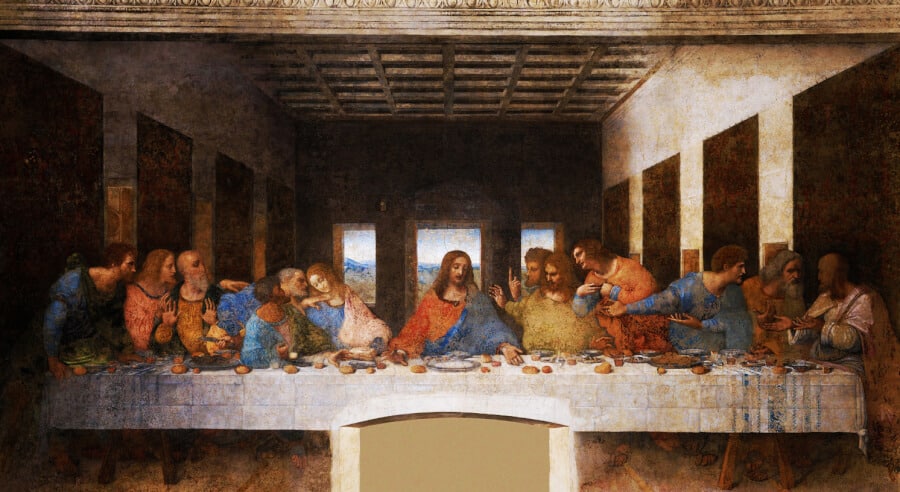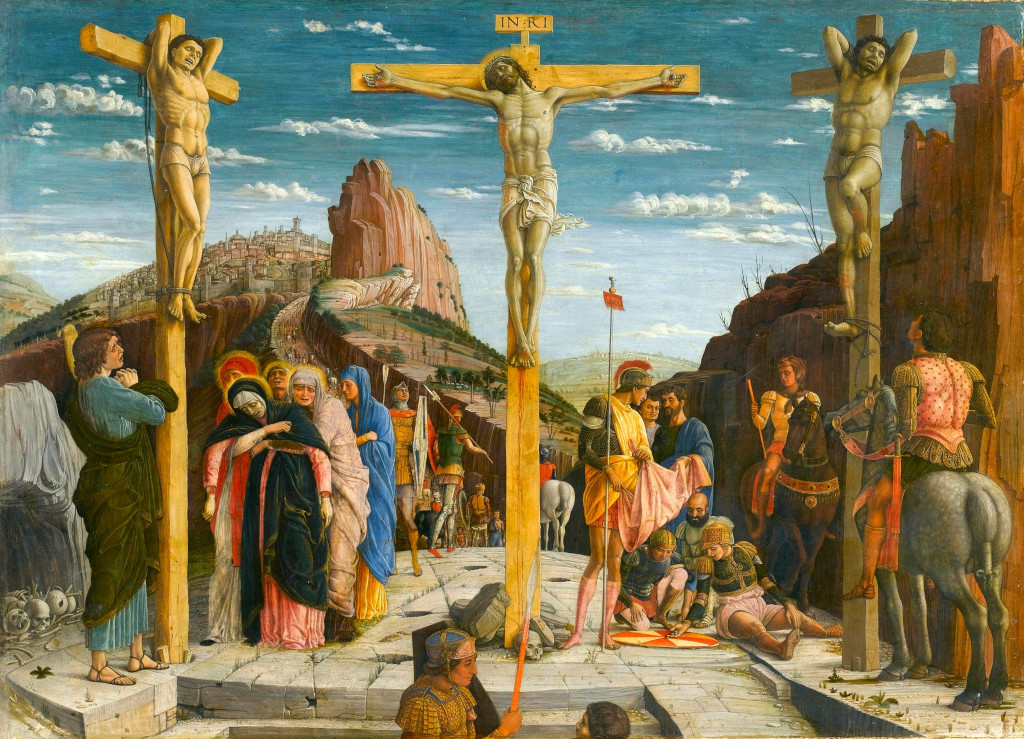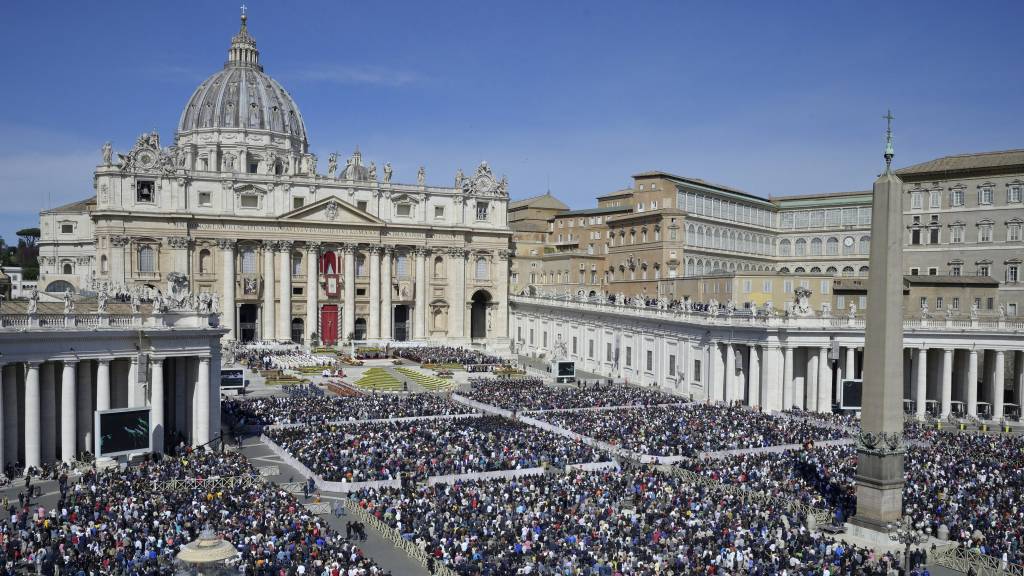Happy Easter: how do catholics and orthodox celebrate?
16 April 2025
This Sunday, 20 April, we celebrate Easter, the most important day for Christians, a little more so than Christmas. People commemorate the “resurrection” of Jesus on this day. Exceptional this year is that Easter falls on the same day for Catholics and Orthodox. How come this is not so other years? And are there other differences between the two strains of Christianity when it comes to Easter? You’ll find out in this article!
Catholic Easter
Catholic Easter falls annually between March 22 and April 25 on the first Sunday after the first full moon since the beginning of spring (March 21). In the first centuries AD, almost every local church celebrated Easter on a different date, but at the first Ecumenical Council in Constantinople (a general assembly of the church), they put out a general (and the current) determination for the date for Easter.
The term “Easter” has its origins in the Jewish Passover. Passover, also called the Feast of Unleavened Bread, celebrates the exodus of the Jews from Egypt, on their way to the Promised Land. As a religious festival, the resurrection of Jesus has similar significance for Catholics. In addition, the feast coincides with the return of spring and so we see elements of earlier seasonal agricultural festivals. One example is the search for eggs. Farmers regarded eggs as a germ of strength. They buried them in their fields so that they would transfer their strength to the soil and ensure a good harvest. Later, eggs also served to regain strength after Lent. Finally, eggs represent new life, think of the little chicks born in spring.

Orthodox Easter
The Orthodox Church, or the Byzantine Church, exceptionally celebrates Easter on the same day this year. Orthodox Easter is celebrated in countries including Bulgaria, Cyprus, Greece, Lebanon, Romania, Georgia, Russia and Ukraine.
Orthodox Easter falls on the first Sunday after the first full moon after Passover. Herein lies the difference with the Catholic Church, where Easter is calculated according to the start of spring. Easter always falls between 4 April and 8 May. Orthodox Easter always falls after the Jewish Passover, because according to the Easter story in the New Testament, Jesus’ crucifixion and resurrection took place after he himself had celebrated Passover.
In addition, the Catholic and Orthodox churches use a different calendar to calculate religious holidays. The Orthodox Church still adheres to the Julian calendar, the original calendar introduced by Julius Caesar. Catholics follow the Gregorian calendar, which was introduced in 1582 by Pope Gregory XIII and is basically a correction to the Julian calendar. There are 13 days difference between the Julian and Gregorian calendar.
Eggs also play an important role in Orthodox tradition. In Greece, hard-boiled eggs are dyed bright red. In Ukraine, pysanky eggs are decorated with beautiful intricate designs. Romanian Easter eggs are hollowed out and decorated with different colours and patterns. In Russia, wooden eggs are decorated with traditional designs. Another tradition is the blessing of food baskets. They are usually filled with bread, cheese, meat, eggs, butter, salt, … because Lent is over and meat and dairy products may be eaten again.


The Holy week
In Orthodox tradition, the beginning of Holy Week is preceded by Lazarus Saturday, this year on 12 April. It marks the end of Lent, which started 40 days earlier on Ash Monday. The day is named after Lazarus who was raised from the dead by Jesus four days after his death.
The following days have a similar pattern and meaning in both religions.
Palm Sunday fell on 13 April this year and is the beginning of Holy Week. It is also the last Sunday of Lent before Easter for Catholics. The name “Holy Week” refers to the fact that, thanks to Jesus, death finally gives way to love and in that sense is conquered. On Palm Sunday, Jesus’ entry into Jerusalem is commemorated. He was festively welcomed with palm branches (branches of palm or olive tree). Palms are the symbol of the king, while olive branches symbolise the peace the king brings.


Maundy Thursday, this year 17 April, commemorates Jesus’ last supper with his 12 disciples. The day’s name refers to the white robe worn by the priest during the Eucharist and the white cloth used to cover the crucifix. During the last supper, Jesus was betrayed by Judas Iscariot, one of his disciples and arrested by the Jewish religious court in Jerusalem. The Roman governor Pontius Pilate later sentenced him to death, after being referred by the Jewish Court. On Maundy Thursday, the Eucharist takes place in the evening. The Churchgoers eat bread and drink wine on this evening, a reference to Jesus’ body and blood.
Good Friday commemorates the crucifixion of Jesus. Good Friday is called ‘good’ because Christians believe Jesus’ voluntary death means that God cares about human suffering. In the Catholic Church, a “Way of the Cross celebration” is held on this day around three in the afternoon. This is a circumambulation along images of the story of Jesus’ torture, carrying of the cross and crucifixion. In the Orthodox church, the service revolves around the 12 gospel readings. At the end of the service, a cross is carried to the centre of the church where it is placed and worshipped.

Easter Saturday recalls the period when Jesus lay dead in the tomb. For Catholics, it is the last day of Lent, which began 40 days earlier on Ash Wednesday. Silence reigns in church life. The cross is now empty and in many churches the altar is now cleared. In Orthodox tradition, this day is called “Holy or Great Saturday” or “Great Sabbath”. They bring an embroidered cloth with an iconographic image of Christ’s entombment, which remains in the church until Easter. Orthodox Christians hold an Easter vigil that ends just before midnight.
Easter Sunday itself commemorates the resurrection of Jesus. The Pope traditionally delivers a speech from St Peter’s Basilica in Rome. After visiting the church, we spend time with our family to celebrate the day.

